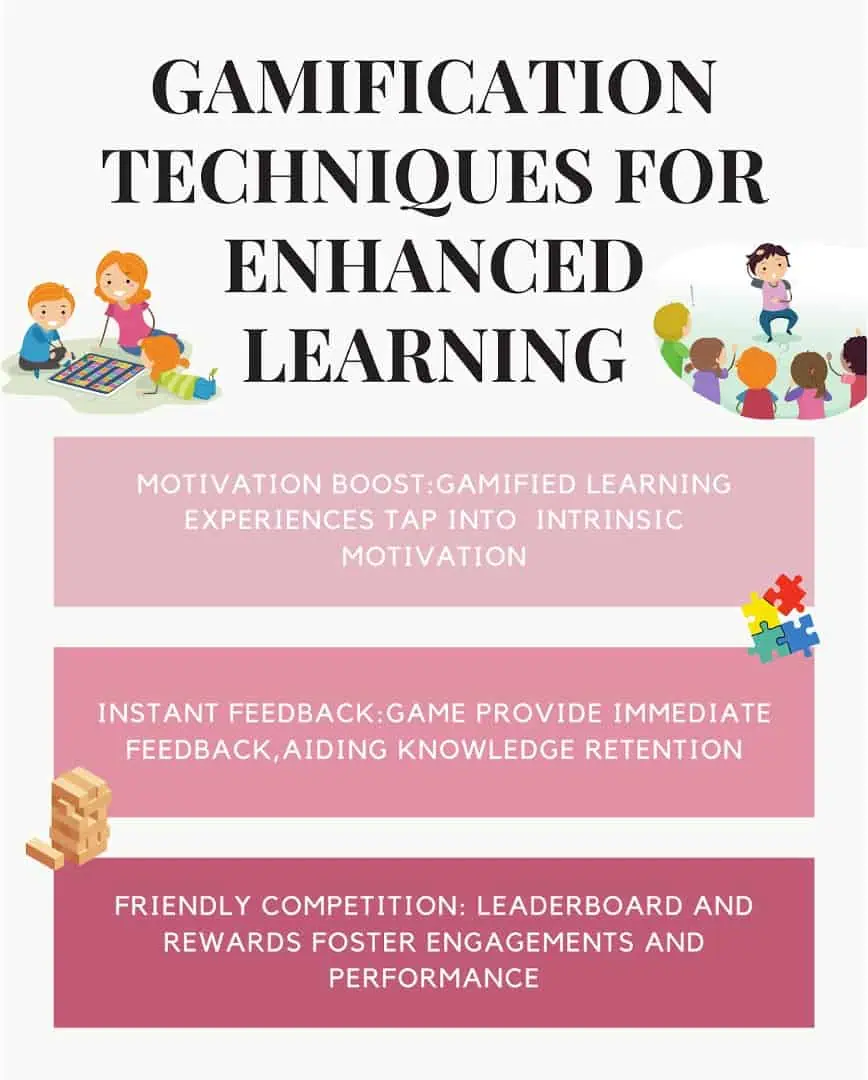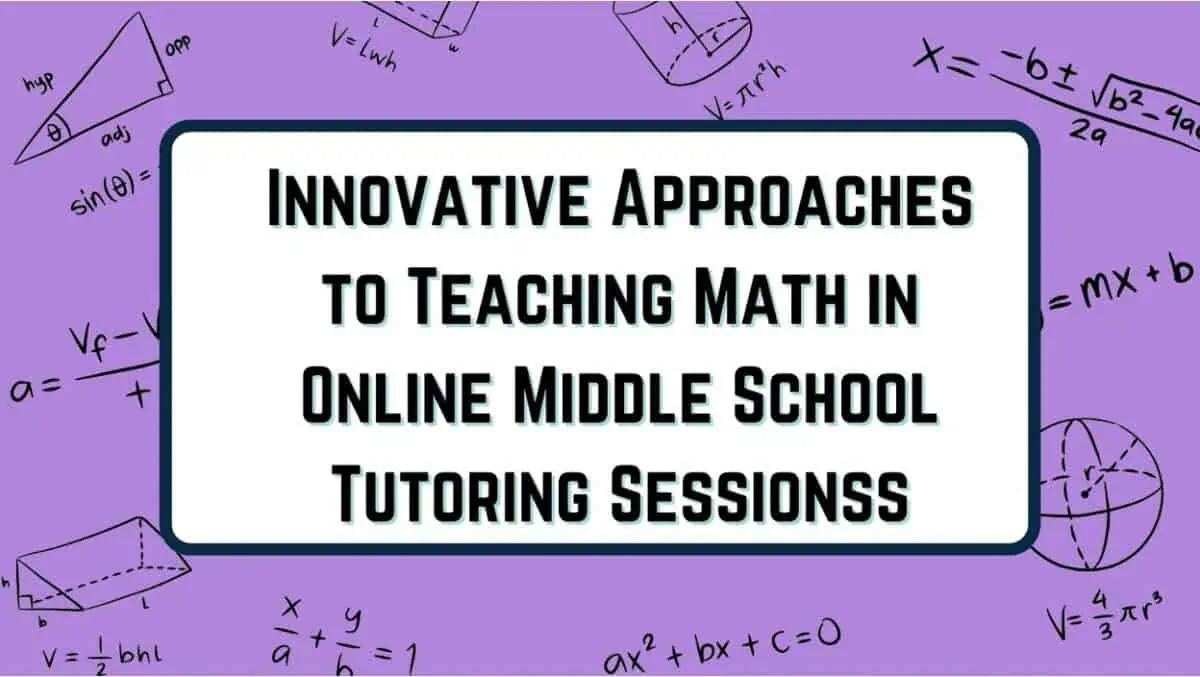Navigating the world of online education can feel like embarking on a new adventure filled with excitement and uncertainty. Transitioning to virtual classrooms often involves encountering unique challenges associated with learning remotely, particularly in foundational and often daunting subjects like mathematics.
Individuals facing these challenges are not alone. Many parents and students, similar to them, are grappling with how to ensure effective learning experiences in this new digital landscape. The transition to online education has undoubtedly presented its share of challenges, especially concerning the mastery of mathematical concepts from a distance.
However, within these challenges lies an opportunity for growth and innovation. Despite the distance, innovative approaches to teaching math exist that can not only bridge the gap between traditional and online learning but also elevate the educational experience and math confidence for individuals or their children.
This article explores these innovative approaches, supported by research and proven to yield significant results. From personalized learning paths tailored to unique needs to engaging interactive activities that bring math confidence to life, we’ll explore how individuals can make the most out of online middle school math tutoring sessions.
The Significance of Effective Math Tutoring in Online Education
Analyses have found that on average, students receiving online tutoring improved their math test scores substantially compared to their untutored peers. These studies highlighted the positive effects of targeted scaffolding and prompt feedback enabled through online tutoring.
https://stridetutoring.com/geometry-tutors/ is one platform that offers such personalized online tutoring. Their tutors are all state-certified teachers and can tailor their lessons to match each student’s learning style and needs. This individualized approach ensures students receive the precise support they require to grasp complex geometric concepts.
Creating engaging and interactive learning experiences is critical for effective online tutoring. Reviews of the literature note that the use of interactive whiteboards is linked to increased student engagement and motivation across subjects, including mathematics.
Tailoring instruction to individual skills and needs has also been shown to enhance achievement and self-efficacy in mathematics. Integrating innovative strategies like personalized learning paths, gamification, collaborative projects, and virtual manipulatives can help ensure online middle school math tutoring sessions are both engaging and impactful.
Utilizing Interactive Whiteboards for Dynamic Problem Solving
Interactive whiteboard technology offers engaging visuals, dynamic examples, and improved collaboration in online tutoring. Studies have found that using interactive whiteboards in middle school math classrooms was linked to increased student participation, engagement, and motivation to learn.
| Traditional Instruction | Interactive Whiteboards |
| Static presentations | Dynamic visuals |
| Passive learning | Active manipulation |
| Limited engagement | Enhanced collaboration |
| Delayed feedback | Immediate visual feedback |
Enhancing Engagement with Interactive Whiteboards
Unlike static presentations, interactive whiteboards enable students to manipulate elements actively, fostering a hands-on and multi-sensory learning experience. Tutors can demonstrate concepts visually, have students annotate diagrams collaboratively, and provide interactive practice problems.
This increased interactivity promotes greater attention and focus. Surveys of students in classes using whiteboard technology found a majority felt more engaged during lessons. Immediate visual feedback and prompts also aid understanding and participation.
Examples: Virtual Manipulatives and Collaborative Problem-Solving Activities
With virtual manipulatives, students can use drag-and-drop features to visualize abstract concepts. For example, tutors can demonstrate fraction operations by having students manipulate digital objects representing pizzas or pies on an interactive whiteboard.
During collaborative activities, students can cooperate to solve multi-step word problems by organizing elements such as numbers, diagrams, and equations on a shared whiteboard. This allows tutors to provide instant feedback and prompts as students construct their understanding.
Gamification Techniques for Enhanced Learning
Integrating game elements into online math tutoring can boost motivation and engage even reluctant learners. Research has found that gamified learning experiences tap into students’ intrinsic motivation and provide instant feedback to promote knowledge retention.
Educational games and competitive math activities also allow students to take on new identities and roles, helping sustain interest and participation.
Integrating Gamification Elements for Motivation
Game elements that can be incorporated into tutoring sessions include avatars, digital rewards like badges or points, leaderboards, redeemable power-ups, and narrative storylines. Setting up individual profiles and progress trackers allows students to monitor their advancement.
Also to unlock new levels and challenges, and cultivate a sense of friendly competition. Studies show increased motivation and class performance when gamification elements were added to middle school math lessons.

Examples: Math-Based Quizzes, Puzzles, and Educational Games
Quizzes presented in an interactive, game-show format with avatars, music, and countdown timers help maintain energy and focus during tutoring sessions. Multiplayer math games allow students to collaborate and problem-solve creatively.
Logic puzzles and riddles with math concepts keep students engaged in applying their skills in fun new contexts. Programs allow students to go on quests by correctly answering math questions tailored adaptively to their level. Utilizing a range of gamified activities sustains student interest while enriching academic experiences.
Personalized Learning Paths and Adaptive Assessments
Creating a personalized learning path based on each student’s unique strengths, weaknesses, and pace of learning is crucial for effective online tutoring.
Studies show individualized instruction accounting for specific skills and needs leads to improved math performance and student confidence. Adaptive learning systems that modify lessons and assessments in real time based on student responses are also beneficial.
Tailoring Learning to Individual Needs
By employing pre-assessments and continuous progress monitoring, tutors can gain insight into each student’s math proficiency and customize activities accordingly. Struggling students may need more practice with foundational concepts before advancing, while high achievers can take on enrichment challenges.
Grouping students based on skill level for targeted small-group instruction is also effective. Personalized learning plans outlining measurable goals, flexible pacing, and tailored resources provide roadmaps for student success.
Benefits of Adaptive Learning
Computer-based adaptive learning systems adjust the sequence of math problems and instructional content based on individual student responses and demonstrate mastery of concepts. This allows areas of weakness to be addressed efficiently while advancing students’ learning without wasting time on redundant exercises.
Analyses indicate that students using adaptive math tutoring programs improved their test scores substantially more than students receiving only standard instruction. The tailored scaffolding and instant feedback of adaptive systems accelerate learning.
Incorporating Real-World Applications and Projects
Relating math concepts to real-life contexts through simulations, modeling, and hands-on projects enhances student motivation and learning outcomes. Research shows students who learned math through relevant applications performed significantly higher on assessments than students who focused only on formulas and computations.
Connecting Math to Real-Life Scenarios
In online tutoring sessions, students can analyze real data sets, construct models and prototypes, or engage in scenarios that demand mathematical skills. For example, calculating travel expenses for a virtual trip or estimating materials for a hypothetical building project makes lessons more meaningful.
Tutors should highlight how mathematical thinking is useful in everyday situations and future careers. Discussing math concepts in realistic contexts improves knowledge transfer and retention.
Examples: Project-Based Learning Tasks
Through designing project-based learning activities, students can creatively apply mathematical concepts. Students could plan a small business startup by analyzing potential costs and profits. Environmental science projects involve graphing climate data or predicting resource usage.
Engineering challenges can integrate math skills as students optimize prototype designs under constraints. Adding collaboration, peer review, and opportunities to revise based on feedback makes projects highly engaging.
Virtual Manipulatives and Simulations
Virtual manipulatives are digital tools that allow students to dynamically represent and interact with mathematical concepts visually. Research has found that virtual manipulatives improve students’ conceptual understanding compared to static representations. They allow abstract ideas to be explored hands-on, facilitating connections between concrete and symbolic reasoning.
Visualizing Abstract Concepts
Online platforms offer virtual graphing calculators, interactive geometry apps, digital 3D shapes, virtual protractors and rulers, fraction bars, number lines, and more. These digital tools give direct visual feedback as students actively manipulate them, creating a deeper understanding. Using virtual manipulatives for modeling and experimentation also engages students in higher-order thinking and problem-solving skills.
Showcase of Online Tools and Resources
Here are some popular virtual manipulative resources used in online math education:
- Drag-and-drop geometry, graphing, statistics, and algebra tools.
- Online graphing calculator with flexible features for class activities.
- Interactive virtual manipulatives for exploring 3D geometry and graphing.
- Extensive library of interactive visual math tools.
- Open-source physics, biology, chemistry, and math simulators.
Integrating these digital tools into online tutoring facilitates interactive investigation of math concepts from middle school through higher levels.
Addressing Math Anxiety Through Supportive Online Environments
Many students experience fear or anxiety toward math that can negatively impact their performance and participation. Research emphasizes the importance of creating a positive, encouraging environment to alleviate math anxiety. This is especially critical in online tutoring where it may be easier for students to disengage.
Creating a Nurturing Atmosphere
Tutors should cultivate a safe, non-judgmental space where students feel comfortable making mistakes and asking questions without embarrassment. Validating student frustrations and using positive reinforcement helps build confidence. Starting with fun warm-up activities and varied engaging lesson formats reduces tension. Small group learning also provides a less intimidating setting.
Tips for Building Math Confidence and Reducing Anxiety
Additional research-backed tips include:
- Breaking problems into smaller, achievable steps with guidance along the way.
- Offering flexible pacing tailored to individual needs.
- Focusing feedback on effort and improvement rather than grades.
- Incorporating stress-relief techniques like deep breathing when anxiety surfaces.
- Using visualization, association, and mnemonic methods as cognitive aids.
- Explicitly addressing and normalizing math anxiety before problem-solving.
Providing an encouraging atmosphere and an array of learning supports is key to nurturing perseverance and a growth mindset in mathematics.
Conclusion
This exploration of research-based strategies demonstrates the vast potential for innovation in online middle school math tutoring. Leveraging interactive whiteboards, gamification, personalized learning paths, real-world projects, virtual manipulatives, and supportive environments can significantly enhance student engagement, motivation, and academic achievement.
As online education expands, integrating these approaches is key to inspiring our middle schoolers to see math as creative, meaningful, and empowering. With the right tools and guidance, any student can gain confidence and capability in mathematics.
Frequently Asked Questions (FAQs)
- How do I ensure my child stays engaged during online math tutoring sessions?
Implementing interactive activities like virtual manipulatives, gamified exercises, and real-world projects helps maintain engagement and motivation during online tutoring. Discussing with the tutor how to incorporate a variety of multisensory and collaborative lesson formats can also enhance the child’s participation.
- Can online tutoring effectively address individual learning needs in math?
Yes, personalized learning paths adapted to each student’s strengths, pace, and skill gaps along with computer-adaptive assessments that adjust in real time enable targeted support and instruction during online tutoring. Communicating specific needs will allow the tutor to customize their approach.
- What measures can be taken to alleviate math anxiety in online middle school students?
Creating a positive online environment with encouragement, patience, and validation of frustrations can help reduce math anxiety. Incorporating stress-relief techniques, confidence-building activities, mnemonic strategies, structured guidance in problem-solving, and opportunities for small group collaboration provides additional support.
Article and permission to publish here provided by Samuel Darwin. Originally written for Supply Chain Game Changer and published on April 17, 2024.
Images provided by Samuel Darwin.

